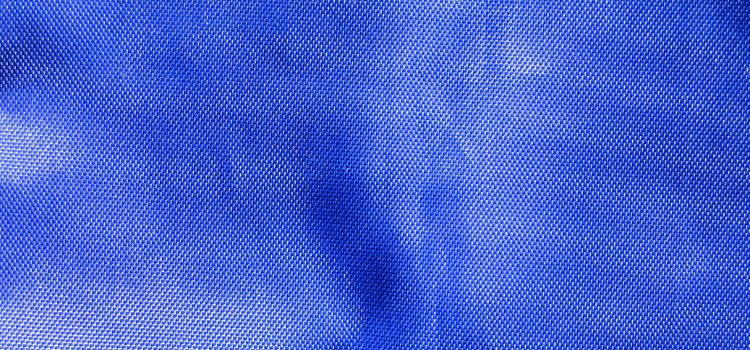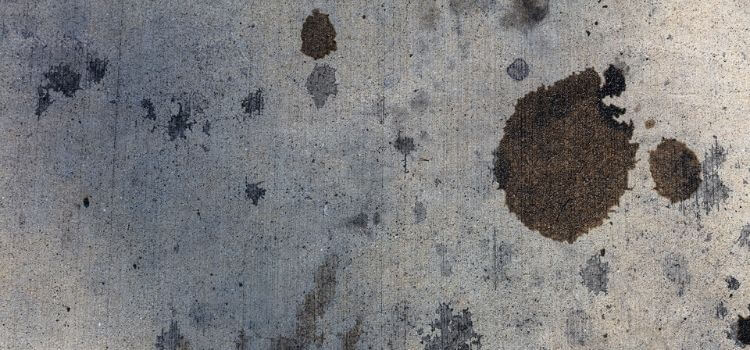If you buy via any of our links, there will be no additional cost to you, and we will receive a tiny commission. More information is available on our Affiliate Disclosure page.

How to Get Stains Out of Polyester?
How to get stains out of polyester? Have trouble removing stains from your favorite polyester garments? We’ve got your back! Find out our superior stain removal hacks and expert advice.
Polyester, a synthetic textile known for its strength and versatility, has become a wardrobe and home essential. This material is valued for its wrinkle resistance and ease of maintenance, whether it’s your favorite polyester blouse, a set of polyester bed sheets, or a polyester-blend carpet.
However, one persistent issue that polyester enthusiasts face is stains. Stains on polyester can be stubborn and unsightly, whether from a spilled glass of red wine, a coffee mishap, or a muddy encounter.
In this guide, we’ll look at techniques and solutions for dealing with the difficult task of removing stains from polyester.
Stains detract from the appearance of your polyester items and can also cause permanent damage if not treated promptly and correctly. Ignoring colors can cause them to set in, making removal even more difficult.
Furthermore, failing to remove stains properly can shorten the lifespan of your polyester possessions, forcing you to replace them sooner than you’d like. That is why it is critical to understand the best methods for stain removal on polyester.
With the proper knowledge and techniques, you can effectively restore your polyester items to pristine condition, ensuring they serve you well for years. So, let’s look at stain removal and see how you can keep your polyester items looking their best.

Can Stains be Removed from Polyester?
Stains on polyester fabric can often be removed, but the success of stain removal depends on several factors, including the type of stain, the nature of the fabric, and the promptness and method of treatment. Polyester is generally more stain-resistant than other fabrics but is not completely stain-proof.
Here are some general tips for removing stains from polyester:
Take Action as soon as Possible
The faster you deal with the stain, the better chance it will be eliminated.
Any excess spill or substance should be blotted or gently scraped away before it becomes embedded in the fabric.
Examine the Care Label
Always check the care label on your polyester item for specific cleaning instructions. Specific requirements may apply to some polyester blends.
Prepare the Stain
Pre-treat the stain with an appropriate stain remover or a mixture of mild detergent and water before washing. To ensure no damage to the fabric, test any stain remover on an inconspicuous area first.
Wash with Caution
Follow the washing temperature and cycle instructions on the care label. In most cases, polyester can be washed in cool or lukewarm water. Hot water should be avoided because it can set some stains.
Use the Proper Detergent
Use a mild detergent designed for synthetic fabrics. Avoid using harsh chemicals or bleach unless otherwise specified on the care label.
Scrub Lightly
Scrub the stained area gently with a soft brush or cloth, not damaging the fabric.
Thoroughly Rinse
Thoroughly rinse the item to remove any remaining detergent or stain remover.
Allow to Dry Naturally
Because high temperatures can damage polyester, it should be air-dried. Hang or lay the stuff flat to remove moisture.
If Necessary, Repeat
Some stains may necessitate multiple treatments. Be patient and persistent, but avoid over-treatment, which can cause fabric damage.
It’s important to note that stain removal success varies depending on the type of stain. Food, beverage, and oil-based paints are frequently effective at removing from polyester. However, older or set-in stains may be more difficult to remove altogether.
Consider consulting a professional dry cleaner for expert stain removal if you’re dealing with a particularly stubborn or delicate stain or if the item is valuable and you need clarification on the best approach.

How to Get Stains Out of 100% Polyester Step-by-Step Guide
Stains on 100% polyester items can aggravate, but they can often be restored to pristine condition with the right approach.
To effectively remove stains and keep your polyester fabrics looking their best, follow these steps:
Act as soon as Possible
The clock is ticking. Take immediate action if you notice a stain to prevent it from setting. Blot or scrape away any excess substance without rubbing it into the fabric.
Examine the Care Label
Always begin by reading the care label on your polyester garment. The recommendations of the manufacturer are your best guide. Make sure to follow any cleaning instructions that are provided.
Prepare the Stain
Combine mild detergent (liquid dish soap or delicate fabric laundry) for most stains with water. Make sure the detergent is safe for synthetic fabrics.
After gently applying the pre-treatment solution to the stained area, let it sit for 5-10 minutes. Brushing excessively may result in cloth damage.
Wash with Caution
Follow the instructions on the care label for water temperature and cycle settings. Polyester is typically safe in cool to lukewarm water. Hot water should be avoided because it can set certain stains.
Hand Cleaning
If your item is delicate, consider hand washing it in a basin with lukewarm water and the pre-treatment solution. Gently agitate the water and thoroughly rinse.
Thoroughly Rinse
After washing, thoroughly rinse the item to remove any detergent or stain remover residue.
For Best Results, Air Dry
The most effective method to preserve the fabric’s quality is to air dry them. Exposure to sunlight should be skipped because it can cause color fading. Just hang or lay the garment flat for drying.
Inspect and Repeat as Needed
Sift through the stained area after it has dried. Don’t be disheartened if the stain remains visible. Some colors may necessitate more than one treatment. Be persistent and patient.
Consider Getting Professional Help
If the stain persists despite your efforts, or if the item is particularly valuable or delicate, consider hiring a professional dry cleaner. They have the knowledge and specialized cleaning agents to handle various stains and fabrics.
Patience and gentleness are essential for successful stain removal from polyester. Avoid scrubbing excessively, and always test any stain remover on a hidden part of the fabric first to ensure it will not harm the material. By following these steps, you can effectively remove stains and extend the life of your 100% polyester items.
.
How to Get Stains Out of Polyester and Spandex Step-by-Step Guide
Many clothing items contain polyester and spandex blends, and you can remove stains from them by following these steps:
You will require the following materials:
Act swiftly:
Get rid of the stain immediately when necessary.
It becomes more challenging to get out the longer it sits.
Examine the Care Label:
Always begin by reading the care label on your clothing. This will give you essential information about properly caring for the fabric. Follow any cleaning instructions that are provided.
Pre-treat the stain as follows:
Blot away any excess stain material with a clean white cloth or paper towel, taking care not to rub the stain.
To make a soapy solution, combine a small amount of mild liquid detergent with warm water. To ensure that it will not cause damage, test it on an inconspicuous area of the fabric.
Make use of the Detergent Solution:
Using a clean cloth or sponge, gently apply the soapy solution to the stained area. To avoid damaging the fabric, blot and dab rather than rub. Work your way from the outside of the stain to the center.
Rinse:
Wash out the stained area with clean water to remove the detergent and loosened stain particles.
Vinegar Solution (for Difficult Stains):
Mix equal amounts of white vinegar and warm water if the stain is still there. Accept the mixture to stay on the stain for a couple of moments and wash carefully with fresh water.
Optional Baking Soda Paste:
To remove particularly stubborn stains, make a paste by combining baking soda and a small amount of water. Apply the paste to the stain and gently rub it for 15-20 minutes. Thoroughly rinse.
Gently scrub (optional):
If the stain is still visible, gently scrub the stained area with the vinegar or baking soda solution using a soft-bristle brush. To avoid fabric damage, avoid being too aggressive.
Rinse Once More:
Rinse the treated area thoroughly with clean water to ensure that all cleaning agents have been removed.
Cleaning the Garment:
Follow the care label instructions when washing the polyester-spandex blend garment. Use a gentle liquid detergent designed for synthetic fabrics.
Air Drying:
Air dry the garment to avoid potential damage from high heat. For the sake of fading colors, stay away from shining sunlight on it. For drying purposes, hang it or lay it flat.
Examine for Residue:
Inspect the stained area after it has dried to ensure the stain has been completely removed. Repeat the treatment as needed if any residue remains.
Remember that stain removal success can vary depending on the type of stain, so be patient and persistent. To protect the fabric, avoid excessive scrubbing or harsh chemicals. These steps can frequently remove stains from polyester and spandex blends.

How to Get Unknown Stains from Polyester Step-by-Step Guide
Removing unknown stains from polyester can be difficult because you may not know the nature of the stain.
You can, however, try a general stain removal method. Here’s a step-by-step procedure:
Examine the Stain
Examine the stain to learn everything you can about it. Determine whether the stain is water-based (like juice or coffee) or oil-based (like grease or salad dressing). Knowing this can assist you in selecting the best stain-removal method.
Scrub or Blot
If any excess substance remains on the fabric, blot it gently with a clean, white cloth or scrape it off with a plastic spoon. Take care not to spread the stain any further.
Pre-treat the Stain as Follows:
For Water-Based Stains, Use the Following:
Combine a mild liquid detergent solution and warm water. To ensure that it will not cause damage, test it on an inconspicuous area of the fabric first.
Use a solvent-based stain remover or rubbing alcohol to remove oil-based stains. Again, start with a test in an inconspicuous location.
Make use of the Pre-treatment Solution:
Using a clean cloth or sponge, gently apply the appropriate pre-treatment solution to the stain. Allow it to sit for 5-10 minutes before removing it from the fabric.
Blot and rinse:
Rinse the affected area with warm water and dry it with a clean cloth. Avoid rubbing because it can harm the fabric.
Wash with Caution:
Washing machines:
For water temperature and cycle settings, comply with the steps given on the care label. Take advantage of a mild laundry detergent designed for artificial fabrics.
Hand Cleaning:
If you’re concerned about the item’s delicate nature, consider hand washing it in lukewarm water with a mild detergent. Gently agitate the water and thoroughly rinse.
Air Drying:
Air dry the polyester item to prevent any harm from high temperatures. To make it dry, hang it or lay it flattened. For the sake of color fading, stay away from bright sunlight.
Inspect and RFepeat as Needed:
After the stain has dried, look into it. Repeat the steps if the stain continues to be visible. Unknown stains may require several therapies; thus, be patient.
Consider Getting Professional Help:
If the stain persists or you are unsure of the nature of the stain, consider taking the item to a professional dry cleaner. They have the knowledge and specialized cleaning agents to handle various stains and fabrics.
Remember to be gentle and cautious throughout the process when dealing with unknown stains. Avoid scrubbing too hard, and always test any cleaning solution on an inconspicuous area of the fabric first to rule out any adverse effects. While some trial and error may be required, following these steps can help you effectively tackle and remove unknown stains from polyester.

What is the Best Stain Remover for Polyester Clothes – Step-by-Step Guide
The finest stain remover for polyester clothes is determined by the type of stain. Different stains may necessitate other methods. Here are some popular stain removers for different types of colors on polyester:
Detergent Solution for Children:
A blend of mild liquid detergent and warm water can frequently work wonders for general stains such as food, juice, or dirt. It’s gentle on polyester and won’t stain.
Using Oxygen to Remove Stains:
OxiClean or hydrogen peroxide-based stain removers are good at removing difficult stains, particularly those of organic origin, such as wine, coffee, or blood. For proper dilution and application, follow the product directions.
Stain Removers With Enzymes:
Protein-based stains, such as grass, blood, or sweat, are easily removed with enzyme-based removers like Zout or Shout.
Using Rubbing Alcohol:
Ink stains on polyester can be removed using rubbing alcohol. Blot and rinse after applying a tiny quantity to the stain.
Acetone (to remove nail polish):
Acetone (nail polish remover) can help remove nail polish stains. Be cautious and perform a test in an inconspicuous location initially.
Glycerin (to remove oil-based stains):
Glycerin can be used to remove oil-based stains such as grease or makeup. Apply a small amount, wait a few minutes, then wash as usual.
Stain Removers for Commercial Use:
Commercial stain removal products are easy to find and designed to eliminate many stains.
Keep up with the manufacturer’s guidelines for the most effective outcomes.
Homemade Stain Remover:
You may also make your own stain removers at home by combining baking soda, vinegar, lemon juice, and dish soap. Some stains may respond nicely to these do-it-yourself remedies.
Always follow these rules when using a stain remover on polyester:
First, Conduct a Test:
Test any stain remover on an inconspicuous area of the fabric to guarantee it will not cause harm or discoloration.
Examine the Labels:
For the best results, follow the stain remover product label instructions.
Application with Caution:
Apply the stain remover carefully, without scrubbing too hard, as this can damage the cloth.
Thoroughly Rinse:
After treating the stain, thoroughly wash the area with lukewarm water to remove any residue.
Wash with Caution:
Follow the care label recommendations on the clothing and use a mild detergent suitable for synthetic fabrics when machine washing.
Because not all stains are the same, the efficiency of a stain remover will differ based on the type and age of the stain. Be patient, persistent, bold, and seek professional assistance if there are obstinate or sensitive stains.
How to Get Oil Stains Out of Polyester Step-by-Step Guide
Removing oil stains from polyester can be difficult, but it is doable with a suitable method. Here’s a step-by-step guide to removing oil stains from polyester:
You will require the following materials:
Act quickly:
The sooner you address the oil stain, the more likely it will be removed successfully. Blot any excess oil from the fabric with a clean white cloth or paper towel (do not rub). Press the cloth gently against the stain to absorb as much oil as possible.
Pre-treat the Stain as Follows:
Place a layer of paper towels or a clean cloth under the stained area to prevent the oil from spreading to other parts of the fabric.
Directly apply a small amount of dishwashing or mild liquid detergent to the oil stain. For added effectiveness, add a few drops of glycerin to the detergent. Glycerin aids in the breakdown of oil stains.
Work the detergent into the stain gently with your fingers or a soft brush. To avoid damaging the fabric, be gentle.
Allow It to Sit:
Allow the detergent (and, if using, glycerin) to sit on the stain for 5-10 minutes. This allows the detergent to penetrate the oil and break it down.
Rinse:
Clean the affected area gently with lukewarm water, being careful not to use too much hot water, as this might cause oil stains to appear. Wash until all traces of detergent have been totally removed.
Examine the Stain:
Examine the affected area. Proceed to the following steps if the oil stain is still visible.
Baking Soda (Optional):
If the stain persists, consider using baking soda as an additional step. Sprinkle baking soda over the stain and gently rub it with your fingertips or a soft brush. After letting it sit for approximately fifteen to twenty minutes, carefully wash the item.
If Necessary, Repeat:
You may need to repeat the pre-treatment and washing process several times to remove stubborn oil stains.
Cleaning the Garment:
When you’re happy with the stain removal, wash the polyester garment as usual, following the care label instructions. Use a gentle detergent designed for synthetic fabrics.
Air Drying:
Air drying your polyester item will protect it from potential heat damage. It should be laid flat or hung up to dry. To avoid any color fading, avoid direct sunlight exposure.
Throughout the stain removal process, remember to be patient and gentle. Rubbing or scrubbing vigorously can cause fabric damage. Always test any stain remover or detergent on an inconspicuous area of the fabric first to ensure there will be no adverse effects. Oil stains on polyester clothing can be effectively removed with patience.
How to Get Grease Stains Out of Polyester Step-by-Step Guide
Although grease stains on polyester might be challenging to remove, the appropriate method can help.
The following instructions will show you how to remove grease spots from polyester:
Materials required:
Respond swiftly:
The sooner you handle the grease stain, the higher your chances of removing it successfully. Using a clean white cloth or paper towel, blot (do not rub) any excess grease from the fabric. Press the towel gently against the discoloration to absorb as much grease as possible.
Pre-treat the Stain with the Following Steps:
Place a layer of paper towels or a clean cloth under the stained spot to prevent the oil from spreading to other portions of the fabric.
Directly apply a small amount of dishwashing or mild liquid detergent to the grease stain. Work the detergent into the stain gently with your fingers or a soft brush. To avoid damaging the fabric, be gentle.
Allow It for Sit:
Allow the detergent to sit on the grease stain for 5-10 minutes. This allows the detergent to dissolve the grease.
Launder:
Wash the soiled area gently with lukewarm water, thoroughly rinse it until all traces of detergent are gone.
Examine the Stain:
Examine the affected region. Proceed to the following steps if the grease stain is still visible.
Optional Baking Soda:
Baking soda can be used to remove persistent grease stains. Sprinkle baking soda over the stain and gently work it with your fingers or a soft brush. Allow it to remain for 15-20 minutes before adequately rinsing.
If Necessary, Repeat:
Multiple treatments may be required for grease stains. If the stain remains, continue the pre-treatment and washing steps until the stain is removed.
Cleaning the Garment:
When you’re happy with the stain removal, wash the polyester garment as usual, following the care label instructions. Use a gentle detergent designed for synthetic fabrics.
Drying by Air:
To avoid any potential heat-related injury, air dry the polyester item. You have two options for drying: hanging it or laying it flat. Make sure it is not in direct sunlight to avoid color fading.
Throughout the stain removal process, remember to be patient and gentle. Rubbing or scrubbing vigorously can cause fabric damage. Always test any stain remover or detergent on an inconspicuous area of the fabric first to ensure there will be no adverse effects. Grease stains on polyester clothing can be effectively removed with perseverance.
How to Get Water Stains Out of Polyester? Step-by-Step Guide
Water stains on polyester are usually produced by mineral deposits or water pollutants. These stains can show on the fabric as light or dark spots. Follow these steps to remove water stains from polyester:
You will Require the Following Materials:
Getting Rid of Stains:
If the stain is fresh, gently pat it with a new white cloth or paper towel. This will help absorb excess moisture.
In an Inconspicuous Location:
Before applying any remedy to the entire soiled area, test it in an inconspicuous section of the cloth to guarantee that it will not have any negative consequences.
Solution of Vinegar:
Combine equal amounts of distilled white vinegar and warm water. To begin, use a 1:1 ratio.
Utilize the Vinegar Solution:
The vinegar solution should be soaked into a clean white towel. Using the cloth, gently dab the water-stained area. Avoid rubbing since it can harm the fabric. Blotting aids in the transfer of mineral deposits or contaminants from polyester to cloth.
Flush:
After blotting the stained area with the vinegar solution, flush it with clean water to remove any remaining vinegar. Make sure to thoroughly rinse.
Optional Baking Soda:
If the water stain persists, you can use a baking soda paste to remove it. Combine a small amount of baking soda and water to make a paste. Apply the paste to the stain and rub it in gently with your fingers. Allow for just a handful of moments when thoroughly washing.
If Necessary, Repeat:
Water stains are notoriously difficult to remove, so you may need to repeat the vinegar or baking soda treatment several times until the stain is gone.
Cleaning the Garment:
After removing the stain, follow the care label directions and wash the polyester garment as usual. Use a gentle detergent designed for synthetic textiles.
Cleaning the Garment:
After removing the stain, follow the care label directions and wash the polyester garment as usual. Use a gentle detergent designed for synthetic textiles.
Drying by Air:
Air drying the polyester item will protect it from potential heat damage. You can dry it by hanging it up or laying it flat. Make sure to keep it out of direct sunlight to avoid color fading.
Remember that rubbing too hard might harm the fabric when repairing water stains on polyester. Always test any cleaning solution on an inconspicuous spot first to guarantee that it will not have any negative consequences. Water stains on polyester can be efficiently removed with patience and determination.
How to get Deodorant Stains Out of Polyester Step-by-Step Guide
Deodorant stains on polyester can be unsightly, but they can usually be removed with the right approach. Here’s a step-by-step guide for removing deodorant stains from polyester:
You will Require the Following Materials:
Act Swiftly:
The sooner you address the deodorant stain, the better your chances of removing it successfully. Deodorant stains can become more difficult to remove if left untreated for an extended period.
In an Inconspicuous Location:
Before applying any treatment to the entire stained area, test it in an inconspicuous area of the fabric to ensure that it will not have any adverse effects.
Solution of Vinegar:
Combine equal parts white vinegar and warm water. To begin, use a 1:1 ratio.
Pre-treat the Stain as Follows:
Blot the deodorant stain with the vinegar solution using a clean white cloth. Rubbing can cause the stain to penetrate deeper into the fabric. Blotting aids in the breakdown and removal of deodorant residue.
Rinse:
After blotting the stained area with the vinegar solution, thoroughly rinse it with clean water to remove all traces of vinegar.
Baking Soda (Optional):
If you have persistent deodorant stains, you can make a paste by combining baking soda and a small amount of water. Apply this paste to the stain and massage it gently with your fingers. Allow it to sit for about 15-20 minutes undisturbed.
Optional Scrub:
If the stain remains visible, gently scrub the stained area with the baking soda paste using a soft-bristle brush. You should be gentle so as not to harm the fabric.
Thoroughly Rinse:
Rinse the area with clean water once more to remove the baking soda paste.
Cleaning the Garment:
When the deodorant stain is gone, wash the polyester garment as usual, according to the care label instructions. Use a gentle liquid detergent designed for synthetic fabrics.
Air Dry:
To avoid potential heat damage, choose air drying for the polyester item. Hang it up or lay it flat to dry while avoiding direct sunlight exposure to prevent color fading.
Examine for Residue:
After the stained area has dried, carefully inspect it to ensure the deodorant stain has been completely removed. If any residue remains, the procedure should be repeated.
Be gentle when treating deodorant stains on polyester to avoid damaging the fabric. Patience and persistence are essential, especially when dealing with older or stubborn stains. You can effectively remove deodorant stains from polyester clothing by following these steps.
How to Get Sweat Stains Out of Polyester Step-by-Step Guide
Sweat stains on polyester are common, but they can be effectively removed with the right approach. Here’s a step-by-step guide for removing sweat stains from polyester:
You will Require the Following Materials:
Act Quickly:
The sooner you address the sweat stain, the more likely it will be removed successfully. Sweat stains can become more difficult to remove if left untreated for an extended period.
In an Inconspicuous Location:
Before applying any treatment to the entire stained area, test it in an inconspicuous area of the fabric to ensure that it will not have any adverse effects.
Solution of Vinegar:
Combine equal parts white vinegar and warm water. To begin, use a 1:1 ratio.
Pre-treat the Stain as Follows:
Gently blot the sweat stain with a clean white cloth dampened with the vinegar solution. Avoid rubbing because it will spread the stain. Blotting aids in the breakdown and removal of sweat residue.
Rinse:
After blotting the stained area with the vinegar solution, rinse it with clean water to remove any remaining vinegar.
Optional Baking Soda:
Make a paste with baking soda and water to remove tough sweat stains and odors. Apply the paste to the stain, gently rub it in with your fingers, and then wait a while for it to set.
Optional Scrub:
If the stain remains visible, gently scrub the stained area with the baking soda paste using a soft-bristle brush. You should be caring to prevent causing affect to the fabric.
Thoroughly Rinse:
Rinse the area with clean water once more to remove the baking soda paste.
Cleaning the Garment:
Follow the care label instructions to wash the polyester garment as usual after the sweat stain has faded. Use a gentle liquid detergent designed for synthetic fabrics.
Air Drying:
To safeguard against potential damage from excessive temperatures, dry by airing the polyester item. Stay away from sunburn to avoid color fading.
Check for Remaining Stains:
After the stained area has dried, see if the sweat stain has been completely removed. Repeat the process to determine whether any residue is still present.
Because sweat stains can contain body oils and salts, vinegar and baking soda aid in the breakdown and neutralization of these components. Be gentle when treating sweat stains on polyester to avoid damaging the fabric. Sweat stains on polyester clothing can be effectively removed with patience and persistence.
How to Get Ink Stains Out of Polyester Step-by-Step Guide
Ink stains on polyester can be difficult to remove, but they can often be removed with the right approach. Here’s a step-by-step guide for removing ink stains from polyester:
You will Require the Following Materials:
Act Swiftly:
The sooner you address the ink stain, the better your chances of removing it successfully. If ink stains are left untreated for an extended period, they can become more difficult to remove.
In an Inconspicuous Location:
Before applying any treatment to the entire stained area, test it in an inconspicuous area of the fabric to ensure that it will not have any adverse effects.
Remove the Stain:
To begin, gently blot the ink stain with a clean white cloth or paper towel to remove as much ink as possible. Rubbing can spread the ink, so be careful not to rub.
Isopropyl Alcohol (IPA):
Dab a cotton ball or Q-tip with 70% or higher isopropyl alcohol on the ink stain. To avoid spreading the stain, work from the outside towards the center. Continue blotting, changing the cotton ball or Q-tip until you see the ink transfer to the cotton.
Rinse:
After treating the stained area with isopropyl alcohol, rinse it with warm water to remove any remaining alcohol and ink. Using a clean white cloth or paper towel, blot the spot.
Cleaning the Garment:
Following the care label instructions, wash the polyester garment as usual after removing as much ink stain as possible. Use a gentle liquid detergent designed for synthetic fabrics.
Air Drying:
Air dry the polyester item to avoid potential damage from high heat. To make it dry, hang it or just lay the thing flat. If you want to prevent color fading, stay away exposed to sunlight.
Examine for Residue:
Inspect the stained area after it has dried to ensure the ink stain has been completely removed. If any ink residue remains, the isopropyl alcohol treatment and washing process can be repeated.
Note:
A few ink stains, mainly if they are older or from permanent markers, may be more difficult to altogether remove. It’s a good idea to consult a professional cleaner who may have additional methods and solvents for dealing with stubborn ink stains.
To avoid damaging the fabric, be patient and gentle when treating ink stains on polyester. Ink removal can be a slow and laborious process that may necessitate multiple attempts.
How to Get Pit Stains Out of Polyester Step-by-Step Guide
Pit stains, commonly called sweat stains, are a regular issue on clothing, particularly underarms. Follow these steps to effectively remove pit stains from polyester:
You will Require the Following Materials:
Act Swiftly:
Take care of pit stains as soon as possible. The longer they sit, the more difficult it can be to remove them.
White Vinegar as a Pre-treatment:
To make a solution, combine equal parts white vinegar and warm water.
Blot the stained area with a clean white cloth soaked in the vinegar mixture to apply this solution to the pit stains. To avoid spreading the stain, gently blot rather than rubbing.
Application of Baking Soda Paste:
Using a little bit of water, make a paste out of baking soda. Apply this mixture to the pit stains and gently massage it with your fingers. Give it around fifteen to twenty minutes to recover.
Scrub Gently (if necessary):
If the stain remains, gently scrub the affected area with the baking soda paste using a soft-bristle brush. Be moderate, as this could damage the fabric.
Rinsing:
Following the vinegar and baking soda treatment, thoroughly rinse the garment under cold water to remove any residue.
Laundry of Clothes:
Follow the care label instructions and wash the polyester garment as usual. Use a mild liquid detergent designed for synthetic fabrics.
Airdry:
Choose air drying for optimal care and to avoid potential damage from excessive heat. To prevent color fading, suspend or lay the item flat during drying and avoid direct sunlight exposure.
Examine for Residue:
Examine the pit stain area after it has dried. If the stain remains visible, repeat the vinegar and baking soda treatment, or use an enzymatic stain remover designed for protein-based stains (such as sweat).
Not to Iron:
Heat can set the stain, so avoid ironing the garment until you are sure the stain is completely gone.
Consider Hiring a Professional Cleaner:
Consider taking the garment to a professional cleaner with specialized stain removal techniques and solvents for persistent or old pit stains that do not respond to home treatments.
Remember that pit stains can contain body oils and salts, which can contribute to discoloration. To avoid damaging the fabric, be gentle when treating pit stains on polyester. Pit stains on polyester clothing can often be effectively removed with patience and persistence.
How to Get Stains Out of Polyester Dress Step-by-Step Guide
Getting rid of stains from a polyester dress can help it last longer and look new. The key is to act quickly and employ effective stain-removal techniques. Here’s a step-by-step guide for removing stains from a polyester dress:
You will Require the Following Materials:
Act Swiftly:
Take care of the stain promptly as it can be done. The more quickly you take action, the greater the chance it will be revoked.
Examine the Care Label:
Check the care label on your polyester dress for any special cleaning instructions. Follow any manufacturer-supplied recommendations.
To Prepare the Stain Ahead of Time, Follow these Steps:
With caution, scrape or blot any excess stain material, such as spilled food, with a clean white cloth or paper towel. Avoid applying pressure to the stain, as it will spread deeper.
Make a solution of mild liquid detergent and warm water for most stains. Test it on an inconspicuous dress area to ensure it will not damage the fabric.
Apply the soapy solution to the stained area gently with a clean cloth or sponge. Pat and dab instead of rubbing to protect the fabric.
Rinse the stained area thoroughly with clean water to remove the detergent and any loosened stain particles. This can be accomplished by blotting with a clean, dampened cloth.
Vinegar Solution (for Difficult Stains):
While the stain is still present, make a solution of equal parts white vinegar and warm water. Allow this solution to sit on the stain for a few minutes before thoroughly rinsing with clean water.
Additional Baking Soda Paste:
Make a paste with baking soda and a small amount of water for particularly stubborn stains. Apply the paste to the stain and gently rub it for about fifteen to twenty minutes. Completely rinse.
Gently Scrub (optional):
If the stain persists, gently scrub the stained area with the vinegar or baking soda solution using a soft-bristle brush. To avoid fabric damage, avoid being too aggressive.
Rinse Once More:
Rinse the treated area thoroughly with clean water to ensure that all cleaning agents have been removed.
Washing Instructions:
If the dress is machine washable, follow the care label instructions and wash it as usual with a mild liquid detergent designed for synthetic fabrics. If the stain disappears after pre-treatment, washing may not be required.
Gentle Drying:
Use a gentle drying method to keep your dress in good condition. Hang it up or lay it flat to air out. To prevent faded coloring, always keep it away from harsh sunlight.
Examine for Residue:
Inspect the stained area after it has dried to ensure the stain has been completely removed. Repeat the treatment as needed if any residue remains.
If Necessary, Iron it:
If the dress needs to be ironed, do so only after ensuring the stain has been completely removed, as heat can set a stain.
Keep in mind that different types of stains may necessitate specialized treatment. Consider stain-specific treatments designed for specific substances, such as ink or red wine, for stubborn stains. To avoid fabric damage, always be gentle when treating a polyester dress. You can effectively remove stains and preserve the beauty of your clothing with patience and persistence.

How to Get Stains Out of Polyester Tablecloths Step-by-Step Guide
Stains on polyester tablecloths can be removed to keep them looking new and ready for your next event.
Here’s a step-by-step guide for removing stains from polyester tablecloths:
You will Require the Following Materials:
Perform Actions Swiftly:
Take care of stains as soon as possible. Stains can be prevented from setting if you act quickly.
Examine the Care Label:
Check the care label on your tablecloth for any special cleaning instructions. Follow any manufacturer-supplied recommendations.
Pre-treat the Stain as Follows:
Excess stain material (spilled food) should be gently scraped or blotted away with a clean white cloth or paper towel. Do not rub the stain because rubbing will spread it.
Make a solution of mild liquid detergent and warm water for most stains. To ensure it will not damage the fabric, test it on an inconspicuous area of the tablecloth.
Apply the soapy mixture to the stained area gently using a clean cloth or sponge.. To avoid fabric damage, blot and dab rather than rub.
Rinse the stained area thoroughly with clean water to remove the detergent and any loosened stain particles. This can be accomplished by blotting with a clean, dampened cloth.
Vinegar Solution (for Difficult Stains):
If the stain remains, make a solution of equal parts white vinegar and warm water. Let the mixture sit for a couple of minutes on the stain. Wash thoroughly with fresh water.
Alternatives Baking Soda Paste:
Make a paste with baking soda and a small amount of water for particularly stubborn stains. Apply the paste to the stain and gently rub it for 15-20 minutes. Thoroughly rinse.
Gently Scrub (optional):
If the stain persists, gently scrub the stained area with the vinegar or baking soda solution using a soft-bristle brush. To avoid fabric damage, avoid being too aggressive.
Rinse Once More:
Rinse the treated area thoroughly with clean water to ensure that all cleaning agents have been removed.
Wash (If necessary):
If the tablecloth is machine washable, follow the care label instructions and wash it as usual with a mild liquid detergent designed for synthetic fabrics. If the stain disappears after pre-treatment, washing may not be required.
Air Drying:
Air dry the tablecloth to avoid potential damage from high heat. To prevent color fading, avoid direct sunlight. To allow for natural drying, It can be hung or laid flat.
Check for Residue:
After drying, inspect the stained area to ensure the stain is completely gone. If any residue remains, repeat the treatment as needed.
Iron (if required):
If the tablecloth needs to be ironed, do so only after ensuring the stain has been completely removed, as heat can set a stain.
Keep in mind that different types of stains may necessitate specialized treatment. Consider stain-specific treatments designed for specific substances, such as wine or coffee, for stubborn stains.
To avoid fabric damage, always be gentle when treating polyester tablecloths. You can effectively remove stains and keep your tablecloth’s appearance with patience and persistence.
How to Get Stains Out of Polyester Couch Step-by-Step Guide
Stains on a polyester couch must be removed gently to avoid damaging the fabric. The specific stain removal method you use will depend on your stain type. Here’s a general guide to removing stains from a polyester couch:
You will Require the Following Materials:
Quick Reaction:
To avoid it becoming ingrained in the fabric, begin addressing the stain as soon as possible.
Examine the Care Label:
Check the care label on your polyester couch for specific cleaning instructions. Follow any manufacturer’s recommendations.
Stain Readiness:
Remove surplus stains with a fresh white cloth or absorbent paper towel. Refrain from rubbing to prevent further spread of the stain.
Make a solution of mild liquid detergent and warm water for most stains. To begin, test it on a hidden couch area to ensure fabric safety. Implementing the soapy mixture to the stained area gently using a clean cloth or sponge-like substance. To avoid fabric damage, dab and blot instead of rubbing.
Rinsing Stage:
Rinse the stained area thoroughly with clean water to remove detergent and loose stain particles. During this process, blot gently with a damp cloth.
Vinegar Solution (for Difficult Stains):
If the stain remains, make a solution of equal parts white vinegar and warm water. Give the solution time to rest on the stain for a few minutes. After that, fully wash with clean water.
Optional Baking Soda Paste:
To remove particularly stubborn stains or odors, make a paste by combining baking soda and a small amount of water. Apply the paste to the stain and gently rub it for 15-20 minutes. After that, thoroughly rinse.
Optional Gentle Scrubbing:
If the stain persists, use a soft-bristle brush to gently scrub the stained area with a vinegar or baking soda solution. Take precautions to avoid fabric damage.
Rinse with a Secondary Rinse:
Repeat the rinse with clean water to ensure that all cleaning agents have been removed.
Upholstery Cleaner (Optional):
If you have a polyester-specific upholstery cleaner, follow the manufacturer’s stain removal instructions.
Drying by Air:
Allow the couch to dry naturally. Heat sources such as hair dryers or heaters should be avoided because they can harm the polyester fabric.
Check for Residues:
After drying, inspect the treated area to ensure that the stain has been completely removed. If any residue remains, the treatment should be repeated as needed.
Consider Hiring a Professional Cleaner:
If you have particularly stubborn or extensive stains or need clarification on the process, it is best to consult a professional upholstery cleaner with the expertise and tools to tackle difficult stains.
Always be patient and gentle when treating stains on a polyester couch to avoid damaging the fabric. You can effectively remove stains and maintain the appearance of your couch with the right approach.
Conclusion
We’ve gone over various stain removal techniques and tips in this guide to help you keep your polyester items looking clean and stain-free.
Check the care labels on your polyester items and follow any cleaning instructions that come with them. Avoid overheating when drying or ironing to avoid damage.
Air dry polyester items whenever possible to maintain their quality and color.
Successful stain removal requires prompt stain treatment.
You can successfully remove stains from polyester items such as clothing, upholstery, and tablecloths by following these techniques and maintaining proper maintenance. Remember to be patient, test cleaning agents in inconspicuous areas, and carefully handle your polyester items to ensure they remain in excellent condition for years.

